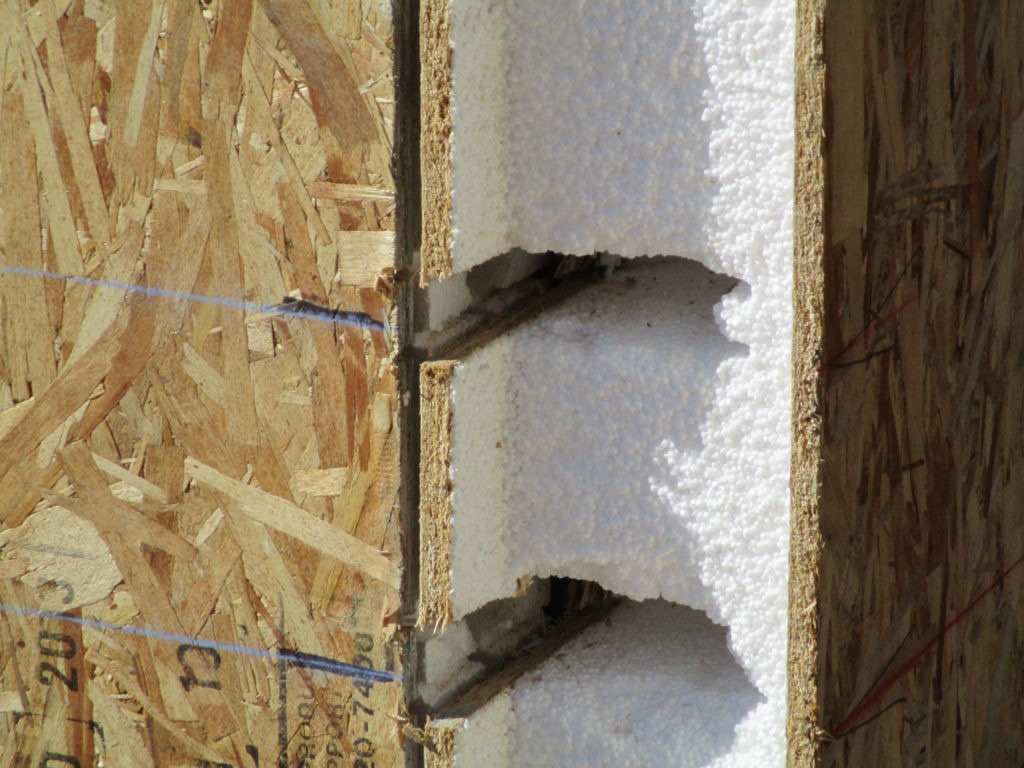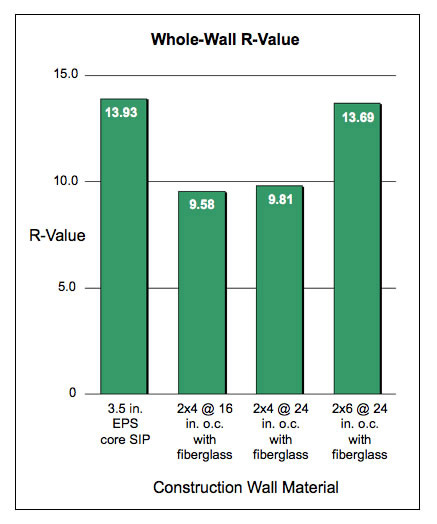We at Foam Laminates of Vermont believe that our panels are, dollar for dollar, a better buy than any other insulation system. The Thermal performance of a building system is the highest concern of consumers today. Our SIPs offer the highest R-value for the lowest possible cost. The R-value of EPS remains stable for the life of the structure, unlike panels using expanded polyurethane, isocyanurate or fiberglass. Our panels require less construction time. The system fits together more quickly, and simply than conventional framing, for an overall savings in man-hours.
Cost-Effective
Building with SIPs can be extremely cost-effective. By the nature of their construction, SIPs can be erected more rapidly than traditional stick-frame buildings. This increased efficiency results in less labor costs and therefore monetary savings. SIPs can often be produced much cheaper than the individual components that make up an insulated stick-framed wall. Moreover, the SIPs erection process is much cleaner and avoids the unpleasant installation of fiberglass.
The superior whole wall R-values of SIPs minimizes the amount of HVAC equipment and severely limits ductwork. This can be a tremendous money-saving feature to SIP homeowners. Additionally, SIP builders generally reduce job site waste which is environmentally advantageous and reduces disposal costs. SIP buildings – including those manufactured by Foam Laminates of Vermont – may qualify for federal and state-funded energy-saving programs including Energy Star. Additionally, banks often grant Energy Efficient Mortgages and many SIP owners have reported that their homes received high appraisals and resale value.

Greater Energy Savings
Perhaps the greatest reason of all why SIPs are exploding into the marketplace is because of their superb energy efficiency and superior thermal performance. An analysis conducted by the Oak Ridge National Laboratory (ORNL) compared the average insulation value (whole-wall R-value) between a SIP wall and some other traditional construction wall sections. Their study determined that a 3.5 in. EPS core SIP outperformed its counterparts in thermal efficiency. Their results are tabulated in the graph above.
One of the major concerns for any homeowner is the inability to control rising energy costs. Recently, there have been spikes in propane, heating oil, electricity, and even the labor associated with felling, splitting, and drying wood for home heating. However, SIPs offer a window of hope; SIPs are virtually airtight due to the nature of their fabrication and installation. As a result, the occupants have much more control over their interior environment.
